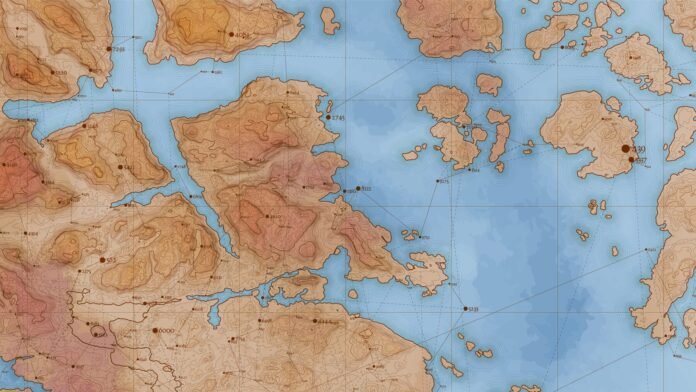Introduction:
The world of Game of Thrones map based on George R.R. Martin’s A Song of Ice and Fire, is as vast and complex as the story itself. With continents, kingdoms, and a multitude of regions steeped in centuries of history, politics, and lore, the map of this fictional world is more than just a geographical tool—it is a guide to understanding the intricate web of power struggles, cultural diversity, and epic journeys that unfold across Westeros and beyond. In this article, we delve deep into the main regions of the Game of Thrones map, exploring their significance and how they shape the narrative.
The Seven Kingdoms of Westeros: A Continent of Power and Politics
The heart of the Game of Thrones narrative lies within the Seven Kingdoms of Westeros, a continent defined by its feuding noble houses, ancient rivalries, and fragile alliances. Each kingdom, though unified under the Iron Throne, maintains distinct cultural identities, military traditions, and landscapes. The North, for example, is a cold and vast region ruled by House Stark, known for its honor and resilience. To the south lies the opulent Reach, a fertile land governed by House Tyrell, rich in agriculture and courtly intrigue. The Westerlands, controlled by the wealthy House Lannister, play a critical role in the politics of the realm, using their gold mines to influence the crown. Understanding these regions is essential to grasping the motivations behind key characters and the broader geopolitical landscape of the series.
King’s Landing: The Political Capital and Seat of the Iron Throne
Positioned on the eastern coast of Westeros, King’s Landing is the capital of the Seven Kingdoms and the seat of the Iron Throne. It is here that much of the political drama of Game of Thrones unfolds, as kings rise and fall, and alliances are brokered in shadowy halls. The Red Keep, with its throne room and dungeons, is a symbol of power, but also of corruption and danger. Surrounding the Red Keep is a sprawling city filled with nobility, merchants, and common folk—all affected by the decisions made within the castle walls. As a setting, King’s Landing encapsulates the themes of ambition, betrayal, and the high cost of power that define the series.
The Wall and Beyond: The Frozen North and the Threat of the Unknown
At the northern edge of Westeros stands the Wall, a massive fortification of ice that separates the Seven Kingdoms from the untamed wilderness beyond. Manned by the Night’s Watch, the Wall is more than a physical barrier—it symbolizes the fragile line between civilization and chaos. Beyond it lies the true North, a realm of ancient magic, wildlings, and the looming threat of the White Walkers. This region introduces a mystical element to the otherwise grounded political drama, reminding viewers that in the world of Game of Thrones, existential threats lurk just beyond the known map. The journey of Jon Snow, who begins as a humble member of the Watch, ties deeply into this landscape as he confronts the realities of leadership, loyalty, and the supernatural.
Essos: The Eastern Continent of Culture, Conflict, and Conquest
Across the Narrow Sea from Westeros lies the vast continent of Essos, a land that provides both contrast and context to the events in the West. From the Free Cities, like Braavos and Pentos, to the ancient ruins of Valyria and the Dothraki Sea, Essos is a melting pot of cultures, languages, and ideologies. It is here that Daenerys Targaryen’s story begins and evolves, as she moves from a displaced royal to a powerful leader seeking to reclaim her birthright. The cities of Slaver’s Bay—Astapor, Yunkai, and Meereen—highlight the social and moral complexities of power, as Daenerys grapples with the realities of rule. Essos serves as a canvas for stories of exile, ambition, and revolution, contrasting the rigid feudal structures of Westeros with a world of mercenaries, traders, and free peoples.
The Iron Islands and Dorne: Peripheral Regions with Central Importance
Often considered peripheral to the central power struggles, regions like the Iron Islands and Dorne nevertheless play pivotal roles in the overall narrative. The Iron Islands, home to the seafaring Greyjoys, embody a harsh, survivalist culture based on raiding and the Old Way. Though often isolated, their ambitions to regain influence lead to bold actions that ripple through the kingdom. Dorne, located in the southernmost part of Westeros, presents a unique cultural identity, marked by its traditions of equality and its desert climate. Governed by House Martell, Dorne’s history of resistance to outside rule and its strategic marriages position it as a quiet but potent player in the Game of Thrones. These regions showcase the diversity of the realm and how even the most distant lands can shift the balance of power.


